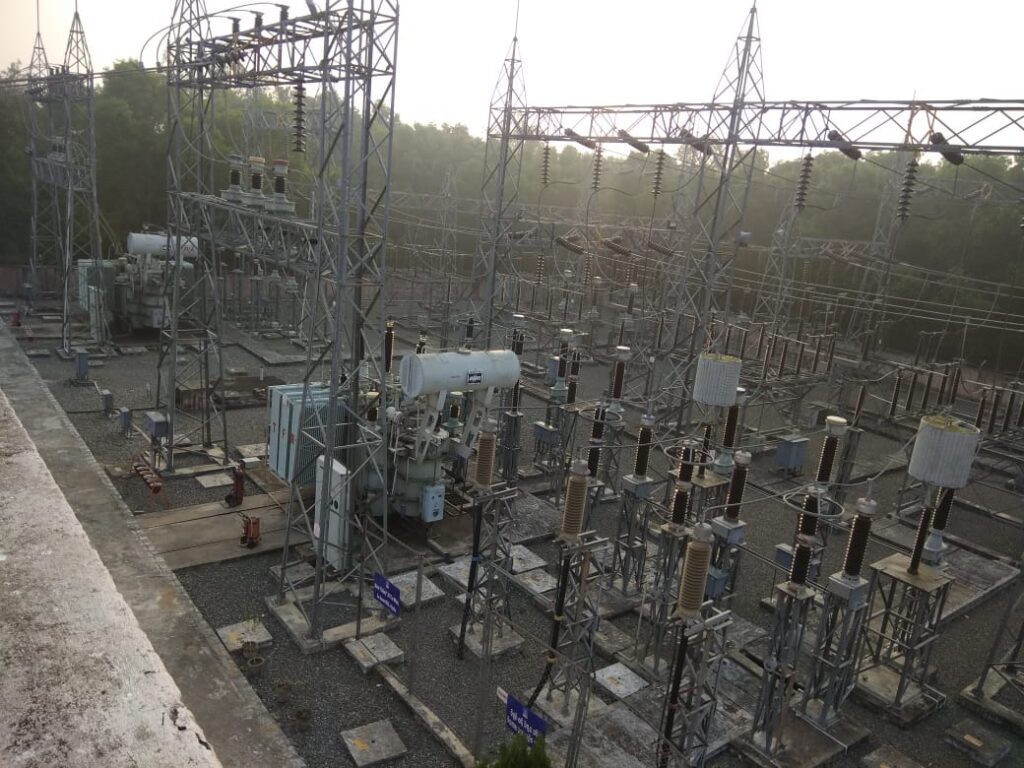LBB stands for Local Breaker backup, and it is used as backup protection of the circuit breaker to isolate the fault in case the circuit breaker is failed to trip. LBB protection plays an important role in power system protection.
The function of LBB:
The protection relay is responsible to detect the fault of a transmission line or other elements and isolate the part by opening the connected circuit breakers. The Protection relay sends the trip command to the circuit breaker, it is observed that due to failure of the trip coil or any mechanical failure, the circuit breaker failed to trip and isolate the fault. It is very much essential to isolate the fault immediately for the stable power system and failure of the connecting equipment.
To prevent this situation, a Local Breaker Backup (LBB) or Breaker failure relay is used for all the circuit breakers to isolate the fault by opening the other connecting breakers.If any trip relay operates, it will send the trip command to the circuit breaker and also send the command as LBB initiation to the LBB relay to active. After getting the initiation from the trip relay, the LBB relay is waiting for the isolation of the fault. After a certain duration, if the fault current is persisting, the LBB relay will operate, and it will send the trip command to all the connecting Circuit breakers to isolate the fault.
Importance of Local Breaker Backup:
- Reliability Enhancement: Local breaker backup enhances the overall reliability of the substation by providing a secondary means of interrupting faulty currents or isolating faulty sections of the grid.
- Redundancy: In the event of a failure of the primary circuit breaker, the local breaker backup ensures that the grid can be quickly and safely disconnected or reconfigured without significant disruption to power supply.
- Fault Management: The backup system helps manage faults more effectively, minimizing the potential for cascading failures and widespread outages.
- Operator Safety: By providing an alternate means of control and isolation, the local breaker backup contributes to the safety of substation operators during fault conditions.
- Reduced Downtime: Rapid fault clearance facilitated by the backup system reduces downtime and aids in maintaining grid stability.
Operating Scheme:
The local breaker backup system typically consists of a backup circuit breaker, protection relays, control circuits, and communication interfaces. Its operating scheme involves the following steps:
- Primary Breaker Failure Detection: Protection relays continuously monitor the primary circuit breaker’s status and current flow. If a fault or breaker failure is detected, the protection relays initiate the backup system.
- Backup Breaker Activation: The backup circuit breaker is signaled to close and establish an alternate path for the fault current or power flow. This helps isolate the faulted section from the rest of the grid.
- Interlock and Coordination: The backup breaker operation is coordinated with other protection devices, such as current transformers, voltage transformers, and relays, to ensure selective tripping and fault clearance.
- Communication and Control: Modern substation automation systems often involve communication networks that allow the backup system to exchange information with the primary breaker and other relevant devices. This enables coordinated actions and real-time monitoring.
- Operator Intervention: Depending on the system design, the backup breaker operation may be automatic or require operator confirmation. Operators may have the ability to override the backup operation under certain conditions.
- Fault Analysis and Restoration: Once the fault is cleared, the substation automation system analyzes the fault data, determines the fault’s location, and assesses the overall grid health. After confirming the fault is cleared, the system can be restored to its normal operating state.
It’s important to note that the design and operation of the local breaker backup system may vary depending on the specific substation configuration, grid requirements, and safety standards. A well-designed and properly maintained local breaker backup system contributes significantly to the overall reliability and resilience of the power distribution network.


